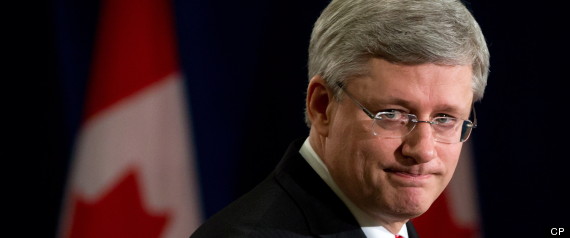Thursday, March 28, 2013
The Conservative Party Conundrum
The Canadian political scene has traditionally benefited from having two dominant centrist parties. The Progressive Conservative party was a centre-right "government in waiting" to the often in charge Liberal Party, which was squarely in the centre; veering left or right depending on the issue at hand. This made the Liberal party a very attractive political force in Canada, and once again it seems Canadians crave a move towed the centre.
When the PC party collapsed in the early 90s, the Reform Party movement came to prominence under the guidance of Preston Manning, and the merger between the two parties under Stephen Harper a decade later left a strong rift between the social conservative Reform/Alliance members and the more progressive wing of the new party. The answer to bridging this gap was undoubtedly Harper himself. His popularity as leader of the Reform/Alliance party was high, and his first move as leader of the newly founded Conservative Party of Canada was to conduct a campaign in which he assured Canadians, particularly soft Liberals and Progressive Conservatives in Ontario, that the Alliance wing of the party was not in control.The new Conservative Party was not a US Republican style social conservative party, and with this move Harper brought the party toward the centre of Canadian politics, in spite of concerns from his social conservative base.
To achieve his goal of attaining a government, Harper was forced to, and was successful in muzzling his more outlandish members. Very few Conservative MPs took part in debates in their own constituencies during elections, and rarely spoke outside the party line. Harper effectively made himself alone the Conservative brand, and he won government as a one man show.
Recent events have called into question Harper's control over his own caucus, particularly since the Conservative Party gained a majority mandate in 2011. The old rifts in the Conservative Party appear to have reopened. Social conservative MPs have publicly bemoaned being stifled from introducing abortion legislation; a debate that the vast majority of Canadians do not want reopened. And neither does Stephen Harper.
Harper is now in a precarious position. If he allows the conservative base of his party to do as they wish and introduce more social conservative bills to parliament, he will lose the next election almost certainly, as Canadians have never been particularly fond of fringe beliefs, be they on the right or left, and much of the soft Conservative vote east of Manitoba would be lost. Alternatively, if Mr. Harper continues to stifle his members, the knives may soon come out, and he could find himself being replaced by a more conservative leader for the party; effectively making the Conservatives unelectable in many parts of the country. This may suggest that the marriage of these two very different parties could prove to be a grievous error.
What does the future hold for the Conservative party without Stephen Harper at the helm to stifle members who want to push for a more social conservative agenda? Harper has left few possible successors, and the stitches that held together two old parties may soon start to rip if the Conservatives continue to slide in the polls. Whoever replaces Harper will need to be as shrewd and forceful in party discipline as he is if they want to win in a Canada that is veering toward the left as they try desperately to push to the right. Is there a Conservative Party without Stephen Harper? Only time will tell.
Subscribe to:
Posts (Atom)
